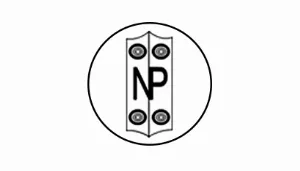At 99.3%, the overall enrolment rate of children in the age group 6-14 in Nagaland was higher in than the national average of 98.4% in 2022. According to the Annual Status of Education Report (ASER), 2022 released by Ajay Piramal, chairman of Piramal Group and chairman of Pratham Education Foundation, in New Delhi on Wednesday, government school enrolment in Nagaland (6-14 years) had also increased from 49.3% in 2018 to 50.8% in 2022.
But the State’s figure (8.75%) for the proportion of 15-16-year-old girls not enrolled in schools was higher than the national average of 7.9% and was slightly lesser than boys of the same age group with 10.3% who are currently not enrolled in schools. Only three States had more than 10% of girls in this age group out of school – Madhya Pradesh (17%), Uttar Pradesh (15%) and Chhattisgarh (11.2%).
In 2008, nationally, more than 20% of girls in the 15-16 age group were not enrolled in school, which dropped to 13.5% in 2018, before falling to 7.9% in 2022.
Further, according to the 17th ASER, 22.7% of 3-year-olds were enrolled in Anganwadi centres in Nagaland in 2018, which had increased slightly in 2022 to 23.1%. But, the figure for 4-year-olds enrolled in Anganwadi centres decreased from 8.8% in 2018 to 3.9% in 2022. However, the most significant decrease can be noticed among the 6-year-olds with 11.7% in 2018 to 0.5% in 2022. In Nagaland, the proportion of children in Std I-VIII taking paid private tuition classes increased from 25.4% in 2018 to 34.9% in 2022. The proportion is more among private school students with 48.4% as compared to government school students with 22.2%.
Nationally too, the proportion of children in Std I-VIII taking paid private tuition classes increased from 26.4% in 2018 to 30.5% in 2022. In Uttar Pradesh, Bihar and Jharkhand, the proportion of children taking paid private tuition increased by 8 percentage points or more over 2018 levels.
Nagaland, like many other States, also witnessed a decline in the percentage of children in Std III in government and private schools who could read Std II level from 22.6% in 2018 to 21.2% in 2022. The proportion of children in Std V who could at least read a Std II level text had been more or less constant in the State from 48.1% in 2018 to 48.2 % in 2022.
The State also saw a slight growth in the basic reading ability of Std VIII students from 83.8% in 2018 to 86.4% in 2022. The figure of children in Std III who were able to least do subtraction dropped from 37.0% in 2018 to 33.8 % in 2022 in the State.
Nagaland’s proportion of children in Std V who can do division has seen a large drop from 25.8% in 2018 to 15.3% in 2022.
The performance of Std VIII in division slightly decreased from 51.5 % in 2018 to 50.3% in 2022.
English reading and comprehension for children of standard V was 65.0% in 2016, which dropped to 57.9% in 2022. There has also been a drop in the reading and comprehension level of Std VIII students from 92.4% in 2016 to 90.3% in 2022.
Also, 55.6% of children in Std III could read words but not sentences and of the 55.6% children in grade III who could read words, 60.6% could tell the meaning of the words.
Nagaland saw an increase in number of primary schools with total enrolment of 60 or less. The figure was 50.3% in 2010, 45.6% in 2014, 81.8% in 2018 and in 2022 the figure is 91.4%
The average teacher attendance in primary schools in 2018 was 82.9% and 89.8% in 2022. In upper primary schools, average teachers’ attendance was 74.9% in 2018 and 87.1% in 2022. Student attendance showed an increase in both primary and upper primary schools. In 2018, student attendance in primary schools was 77.2% and 85.2% in 2022. In upper primary, it was 74.9% in 2018 and 87.1% in 2022.
Further, 48.6% of schools visited had usable toilets for girls; drinking water was available in 25.7% of the schools; 25% had books other than textbooks being used by students.
Nagaland schools had also seen a decrease in the availability of drinking water from 63.8% in 2018 to 61.4% in 2022.
Also, 52.0% primary schools had a playground in 2022, while 55.5% upper primary schools in 2022 had a playground. This is less than in 2018, where 64.6% of the upper primary schools had a playground.
Finally, 80.0% primary schools in Nagaland had at least one teacher who had received FLN training. In upper primary schools, 94.6% primary schools had at least one teacher with an FLN training.
Discovered on: 2023-01-19 20:51:11
Source: Enrolment rate in Nagaland higher than national average: ASER


